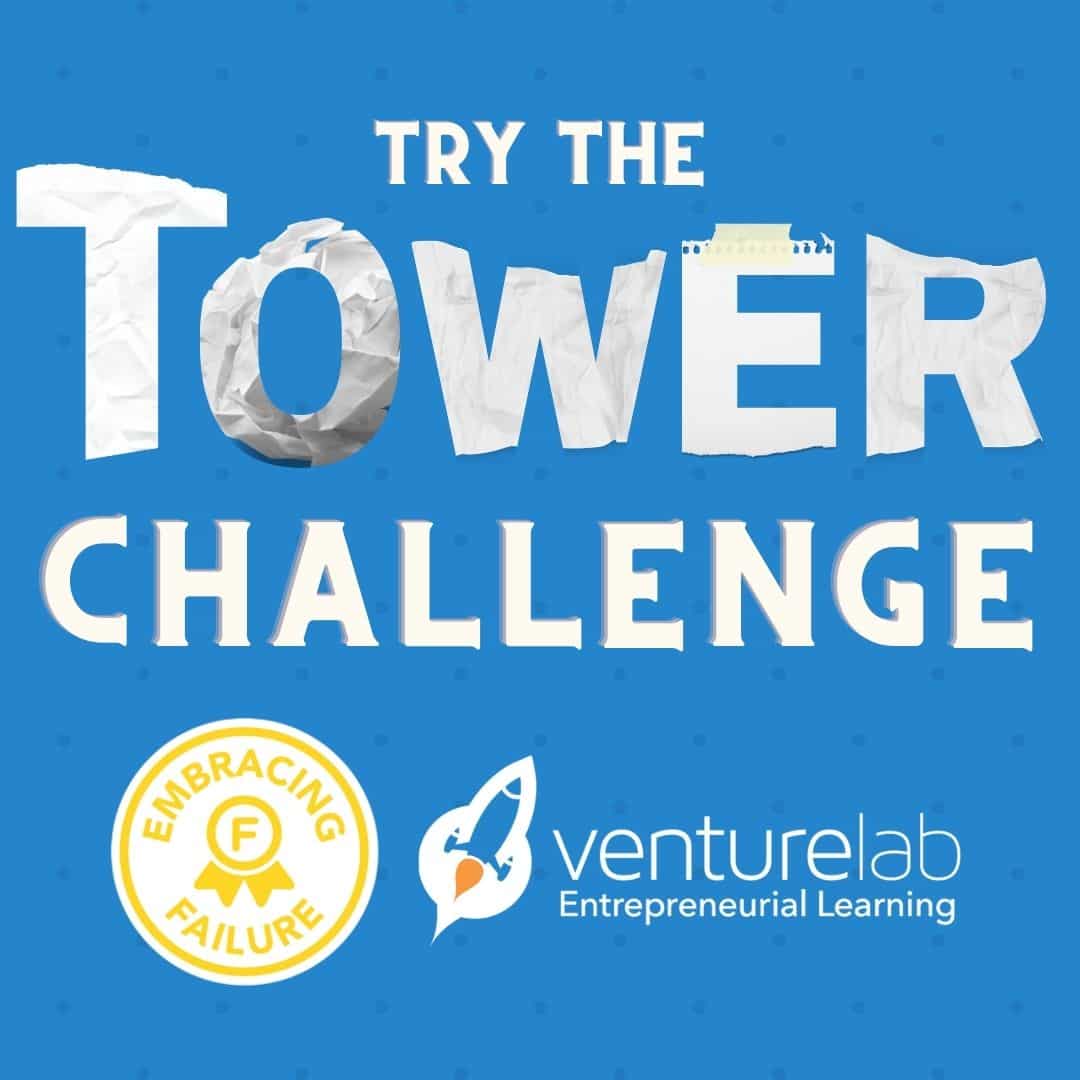
Embracing Failure with the Tower Challenge
VentureLab |
January 21, 2021

We know that cultivating a mindset of embracing failure doesn’t happen in an instant. It takes consistent practice. Each moment of failure is an opportunity to engage in the cycle of learning and improvement. (Learn more about this and the process of embracing failure on our blog!)
Designers, engineers, and entrepreneurs know this process as iteration, the process of making changes and improvements. Each iteration is a learning opportunity. Each iteration teaches what works and what doesn’t. It’s not bad. It’s not wrong. It’s just an iteration in the process of improving our business ideas, and ourselves!
To practice embracing failure, we at VentureLab recommend the Tower Challenge. This activity is an iteration on The Marshmallow Challenge presented by Tom Wujec during this TED Talk “Build a Tower, Build a Team.”
Tower Challenge Activity
Explain that in today’s lesson, youth will experience what it is like to be an entrepreneur and they will learn more about how people who are entrepreneurial think and behave. Emphasize that being entrepreneurial isn’t just about setting up and running a business; whatever they choose to do in the future, they will benefit from these skills and ways of thinking (mindsets)!
Build a tower as tall as you can by overcoming challenges! Reflect on how you persevere through failures during this classic design challenge with an entrepreneurial lens.
Instructions:
Build a tower as tall as you can using only 2 sheets of 8-1/2 x 11 paper and 1 pair of scissors. The tower must be free standing. It can’t be supported by a table or wall. The tower cannot be taped to the table or floor. The tower must stand on its own for at least 10 seconds!
Activity Tips:
- Do the challenge more than once to see how much you can improve each time
- Give yourself a time limit. A time constraint adds a new element to the challenge
- Try using different materials on subsequent attempts!
Discussion: Learning from Failure
Guided discussion can help youth reflect on what they learned during this activity. Ask students:
- What problems did they have during the different stages of the challenge? Specifically focus for a few minutes on what went wrong and how they “failed.”
- How did they cope when things went wrong? Encourage them to be honest. This is an opportunity to discuss how students feel when things are going wrong and how those feelings affect their responses to problems.
- In what ways did things going wrong help them in the challenge?
Remember these key takeaways:
- Entrepreneurs expect to make mistakes and get things wrong (especially at the beginning of something new)
- Entrepreneurs are resilient in the face of failure. They show determination and grit to overcome challenges. They stay optimistic about their work and try to solve problems in a creative way.
- Entrepreneurs see failure as an opportunity to learn. They learn from many small failures to adapt and improve. This leads to better products and a greater likelihood of success in the end!
VentureLab Instagram inspiration:
View this post on Instagram



